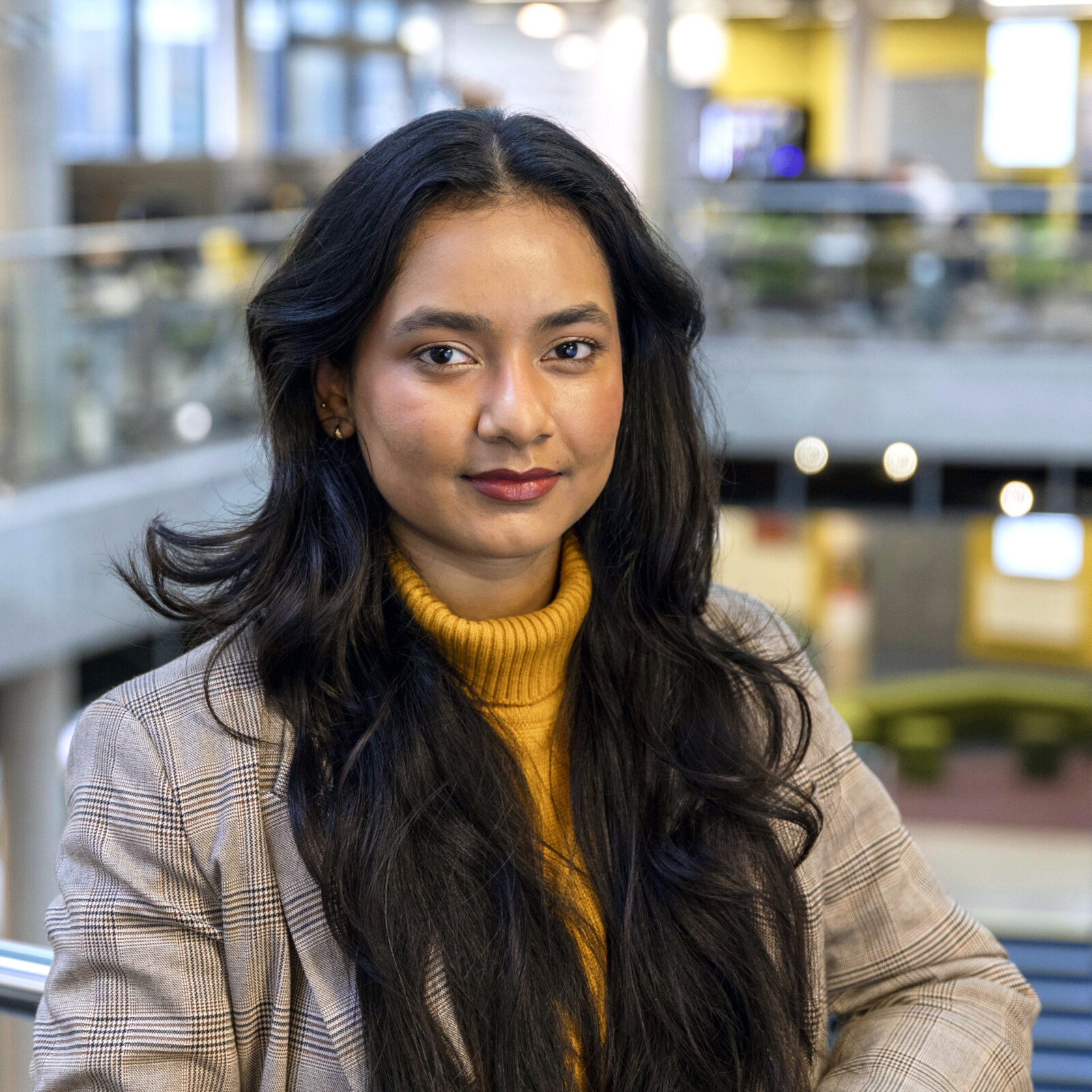In this latest interview with Future Observatory researchers, we are introducing Katharine Willis and Ashita Gupta – the academic team leading Make Space for BEES, a Design Exchange Partnership involving the University of Plymouth and Pollenize.
Design Exchange Partnerships bring academic researchers together with partner organisations (such as businesses, NGOs or local councils) to address challenges relating to the green transition.
In conversation with Future Observatory coordinator Leilah Hirson-Comley, Katharine and Ashita share how their Design Exchange Partnership is exploring new frontiers for nature recovery.
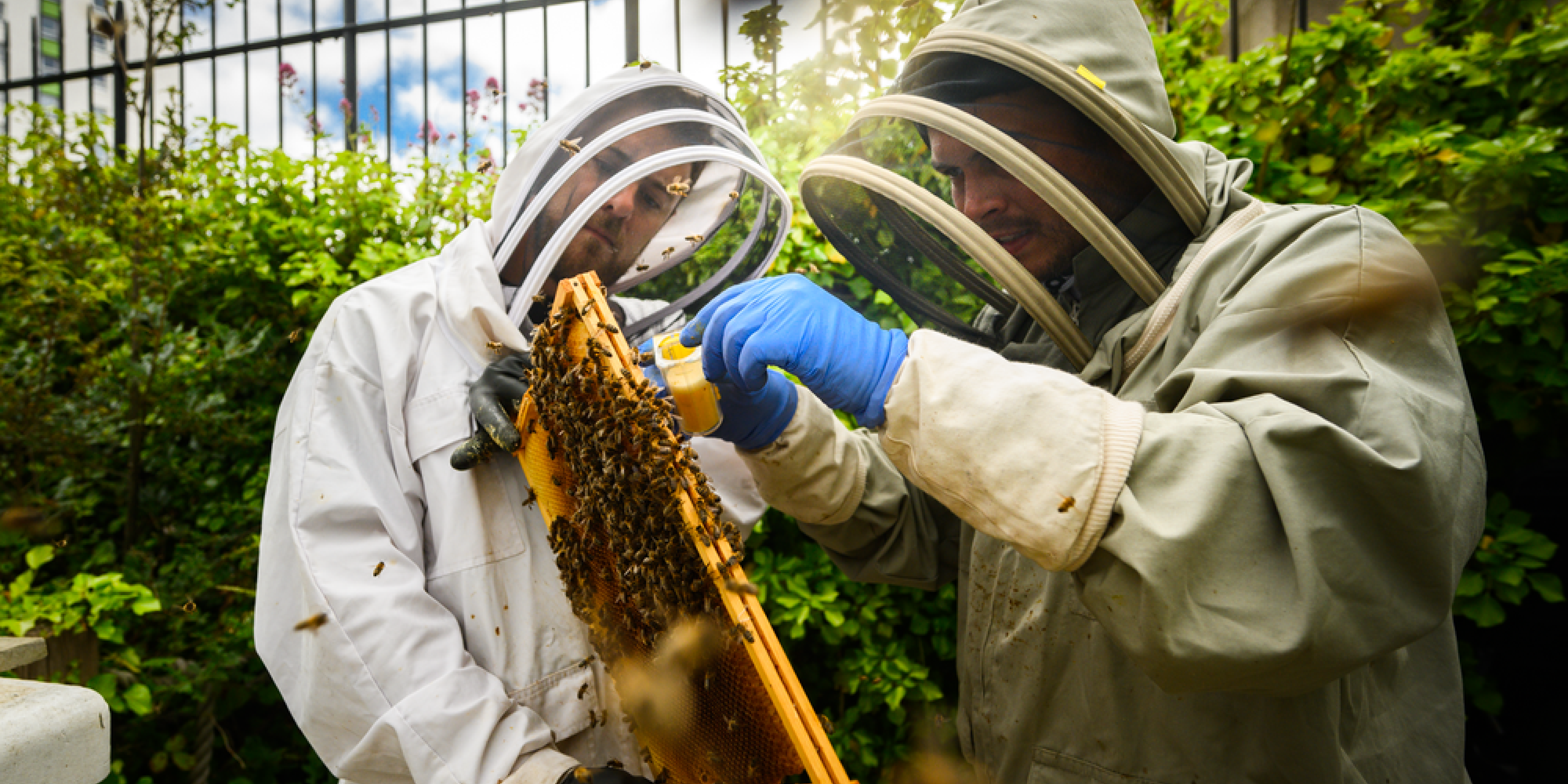
LHC
Could you introduce yourselves?
AG
I’m a Doctoral Researcher and Associate Lecturer in the School of Art, Design and Architecture at the University of Plymouth. I have a foundation in Architecture and a specialisation in Urban Design, centred on sustainable urban regeneration, co-design and stakeholder engagement.
My recent work has leveraged living lab methodologies to co-create digital toolkits with young adults and marginalised communities. The purpose of this is to foster deeper nature-connectedness and support green and blue space governance in Plymouth. It also aligns with my broader interest in developing innovative and participatory approaches to urban design and planning for the creation of sustainable urban futures.
KW
I’m a professor of Smart Cities and Communities at the School of Art, Design and Architecture, University of Plymouth. I am also a Visiting Research Fellow at The Centre for Urban Science and Progress (CUSP), Kings College London and Western Academy for Advanced Research at Western University, Canada.
My research expertise includes smart cities, smart villages, digital technologies and the role of space and place. My approach is focused on the community in the spaces and the need to build from the ground up to create inclusive environments.
LHC
If you were explaining your research project to a 13-year-old, how would you describe it?
KW
We actually have to do this regularly because we work with young people in schools.
AG
When talking to kids, we usually explain that our project is focussed on creating tools to help them make their school grounds more welcoming to pollinators like bees. The aim is to build better homes for these pollinators so they can help new plants grow and keep the environment healthy.
KW
School grounds are undervalued sites for biodiversity. They’re ‘lost’ spaces, but they’re also where school children spend the largest proportion of their time outdoors. We want to increase engagement with these spaces so kids can learn more about biodiversity. To do this, we have created the following:
• Biodiversity patches – physical spaces within schools
• A Biodiversity toolkit – the set of tools needed to observe, manage and care for the biodiversity patches
• BioBlitzes – timed activities which involve recording as many forms of biodiversity within the biodiversity patches as possible
These hands-on activities provide practical way for kids to engage with their green spaces, connect with nature and explore broader ideas relating to the green transition.
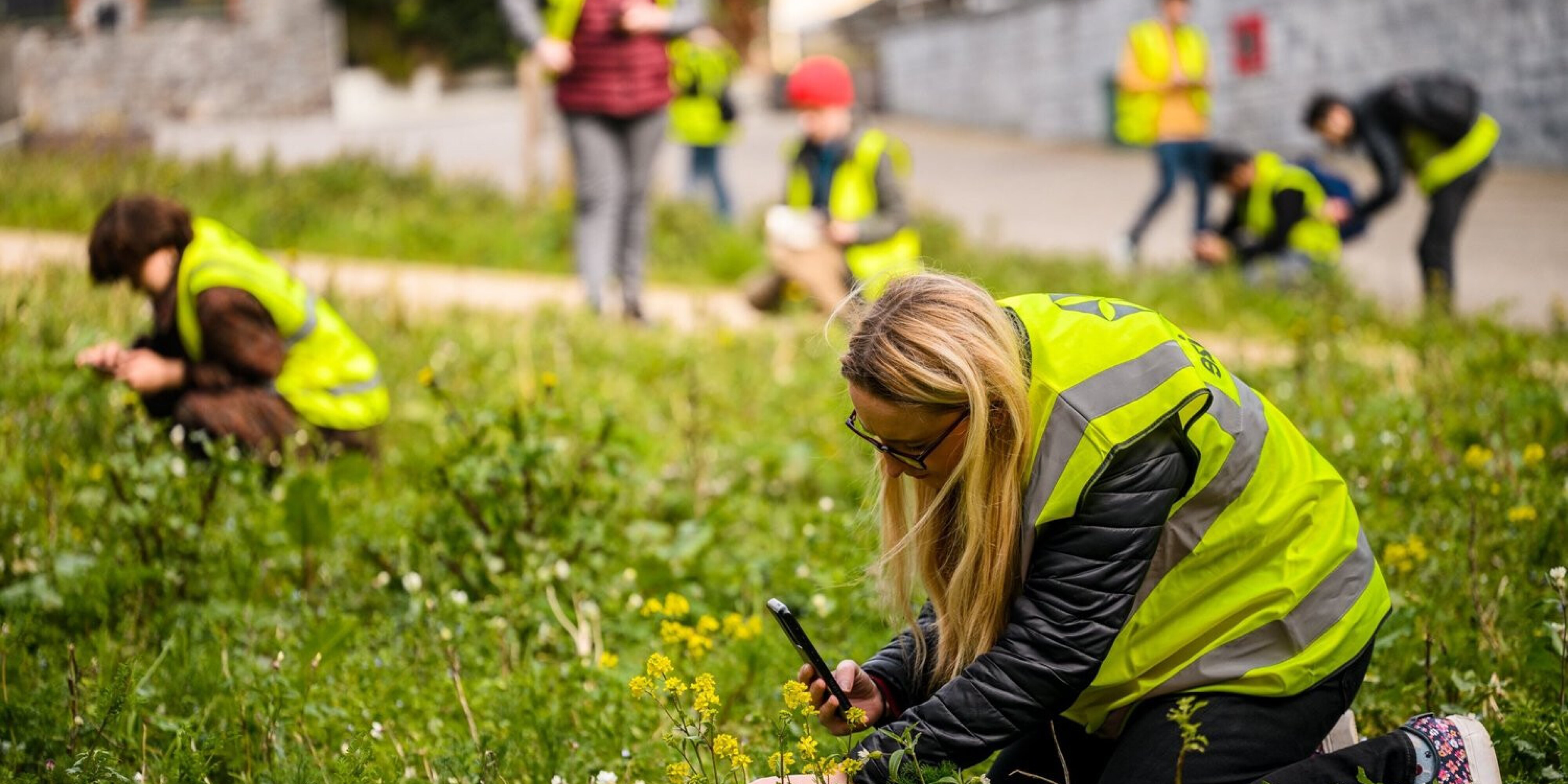
LHC
How does your project support the green transition, and what role can young people play?
KW
It all links to our research into nature connectedness.
AG
This is based on the idea that urban green spaces – including school grounds – have untapped potential for the green transition. By improving the relationships between people and nature, we can begin to utilise these spaces for nature recovery.
Our focus has been on young people because we want to establish long-term impact. We also recognise that environmental challenges are often presented in ways that are too abstract for young people to engage. There aren’t obvious ways to get involved and that is something we are trying to change. Using digital tools and citizen science, we want to empower young people to support nature in their green spaces.
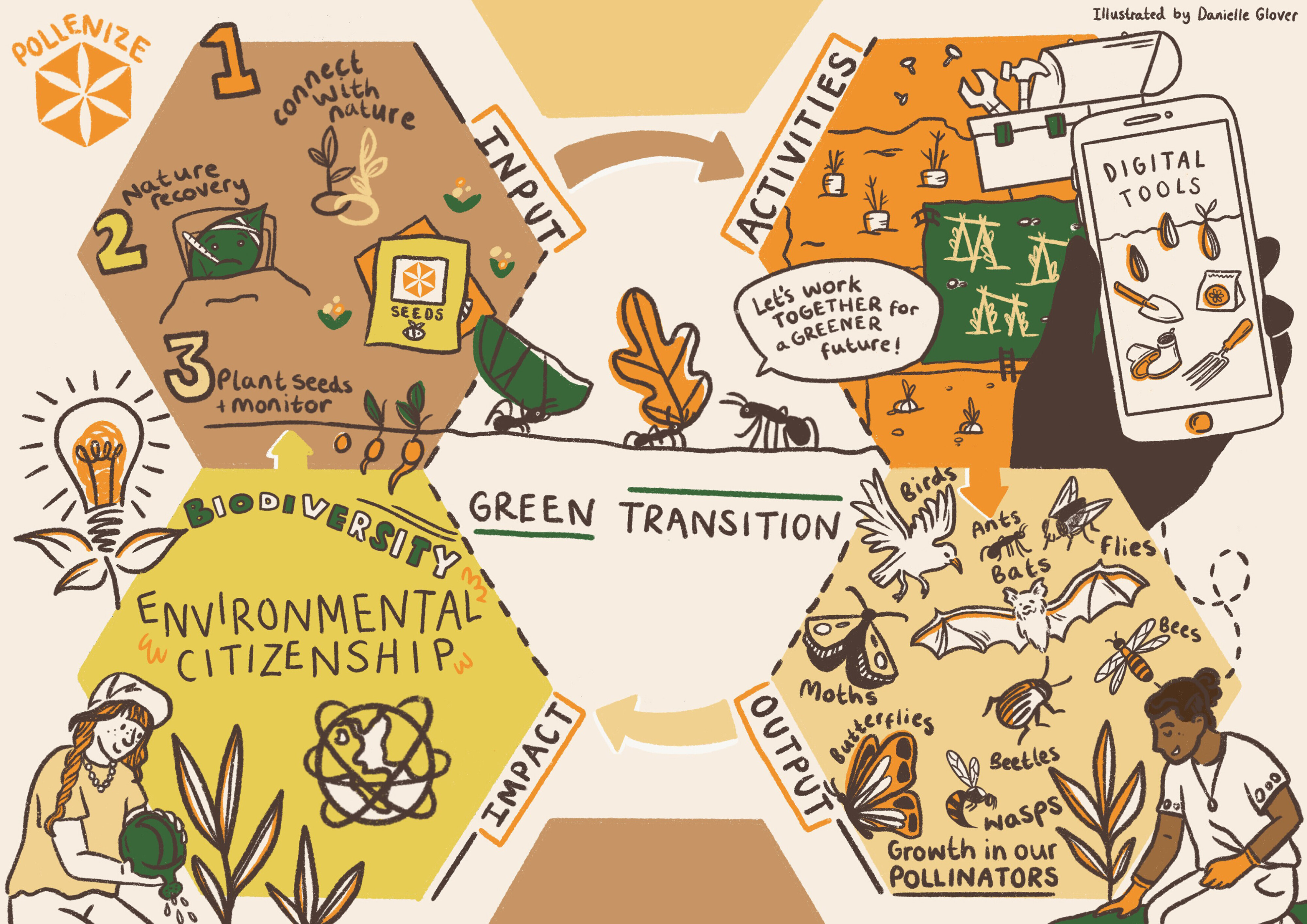
KW
The BioBlitz activity is a great way for young people to get involved. It uses an app called iNaturalist – a widely used and internationally recognised citizen science tool – which harnesses AI to recognise different species. The results are then checked by the kids, turning them into citizen scientists.
‘Floradex’– a tool developed with our partner organisation, Pollenize – takes an audit of the iNaturalist species data found on a site. It then creates a ‘prescription’ of seeds that can be planted to address any pollinator gaps. The point is not just to record; it is to act. That is why Pollenize has been such a great partner: they create pathways to engage and then suggest practical actions to take.
LHC
Could you tell me about the partnership between Plymouth and Pollenize, and your process for co-creating design solutions?
KW
Pollenize are a social enterprise who work to engage people with pollinators. They do this through the development of tools and design-led activities, such as the distribution of seed packets to school children across Plymouth.
Schools can be hard to engage, so that’s where our partnership came in. We combined Pollenize’s expertise with our research into nature connectedness and environmental citizenship, and then we took this into schools.
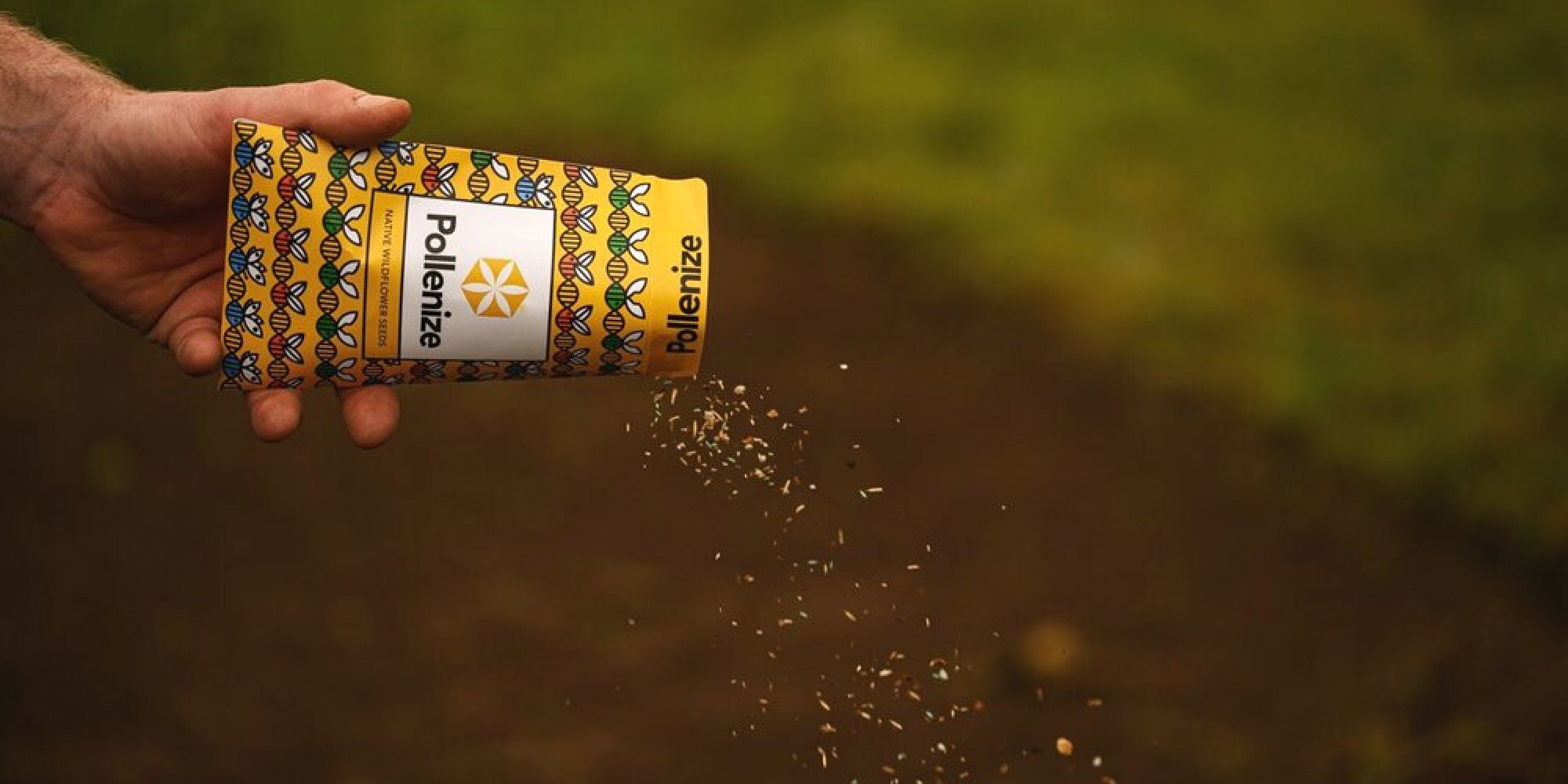
KW
The whole project has had co-design embedded throughout. Initially, this involved discussions with Pollenize around capacity and differing approaches. We had to figure out how a university and social enterprise could work together whilst being mindful of each other’s time and resources.
We then reached out to schools around Cornwall and ran co-designed workshops with them. The toolkits – also co-designed with the schools – are a really nice outcome of this project.
LHC
Looking to the future – what impact do you hope the project will have on a regional and/or national scale?
AG
We developed the toolkit in such a way that it could be linked to the curricula and day-to-day activities of the schools. Currently, we’re working with seven schools and the plan is to expand this network over time.
Additionally, we’re developing a biodiversity engagement guide for working with schools. This will help other organisations working with young people to support biodiversity and nature recovery initiatives.
KW
Learning through Landscapes – a charity that promotes outdoor learning and play for children and young people – is one such organisation. They have been working on a similar initiative to us at a national level but were lacking partners in Cornwall. We saw an opportunity to fill this gap, inform their approach and hopefully help roll the toolkit out across the country.
We’re also aiming to collaborate with Natural England, Cornwall Wildlife Trust and other wildlife trusts across the UK. By the end of January 2025, we hope to have scaled up all our work, enabling other organisations to help it reach impact over the long-term.
*This interview has been edited for length and clarity.


